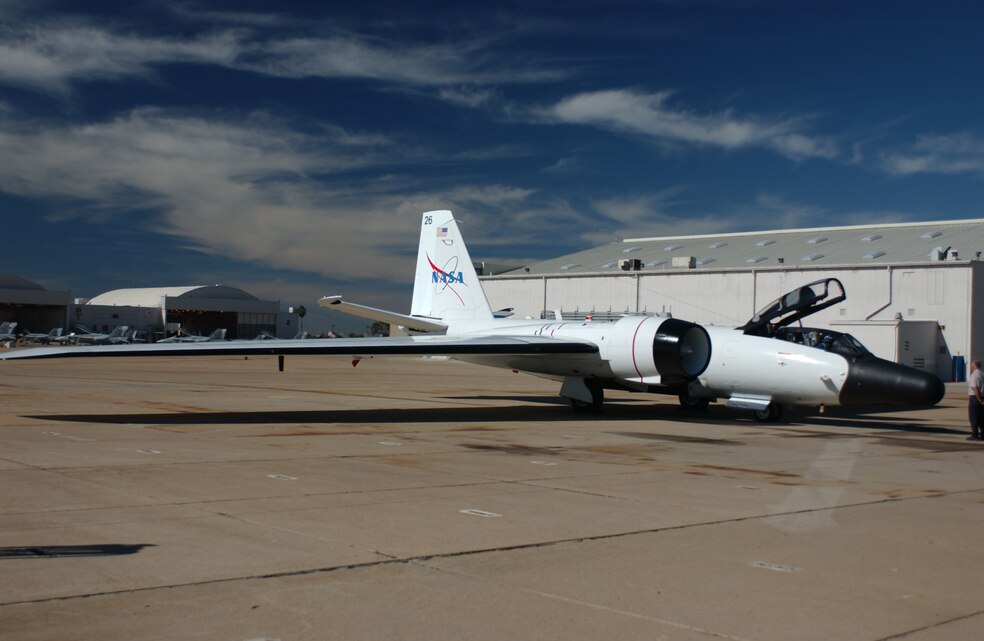MARINE CORPS AIR STATION MIRAMAR, Calif. -- Crew and pilots from the National Aeronautics and Space Administration tested a potentially revolutionary piece of equipment over the skies of Marine Corps Air Station Miramar Nov. 16.
The Air Force and NASA paired up to perform the developmental test of the Battlefield Airborne Communications Node.
The BACN will be used to relay data and voice communication between pilots flying combat and support aircraft and troops on the ground from all branches of the service.
"Today the Marines and the joint forces are having a difficult time sharing digital and voice information with each other," said Air Force 2nd Lt. Brad Powell of Hanscom Air Force Base's electronics systems center. "We are flying an airborne gateway that will allow the forces on the ground to share data while bridging voice and data systems."
With its 122-feet wing span, the 70-foot-long post-World War II WB-57 is capable of climbing to an altitude of 65,000 feet, making it an ideal airplane to test the BACN.
"The plane is used by NASA to check the weather at 60,000 feet," Powell added. "Because it can fly so high we are using it to test our communications payload."
Andy Roberts, NASA test pilot and BACN program manager, flies the WB-57 for missions ranging from communications testing to weather inspections.
"We use the aircraft to develop new sensors that are used by the Department of Defense and the science world," Roberts said. "The BACN is a sensor being built in San Diego, so it makes it easier to relay information back to the company about how the testing is going."
Roberts added that most testing is done at their base in Texas, but this time it was different.
"Because the sensor is being built here, Miramar was nice enough to host us during our testing," Roberts said. "The weather here is perfect for us - clear skies, no rain and the sun is out. These make for perfect conditions compared to what we have in Texas."
Powell added that testing the sensor at Miramar gives the Marines a little bit of an edge when it comes to using the new technology.
"We can talk to a Marine on the ground through his radio, another Marine on his cell phone and stream data to other computers from our radio system," Powell said. "The Marines are getting a first-hand experience with all this."
Miramar tests high-tech NASA aircraft
By Sgt. J.L. Zimmer III | Marine Corps Air Station Miramar-EMS | November 16, 2005
